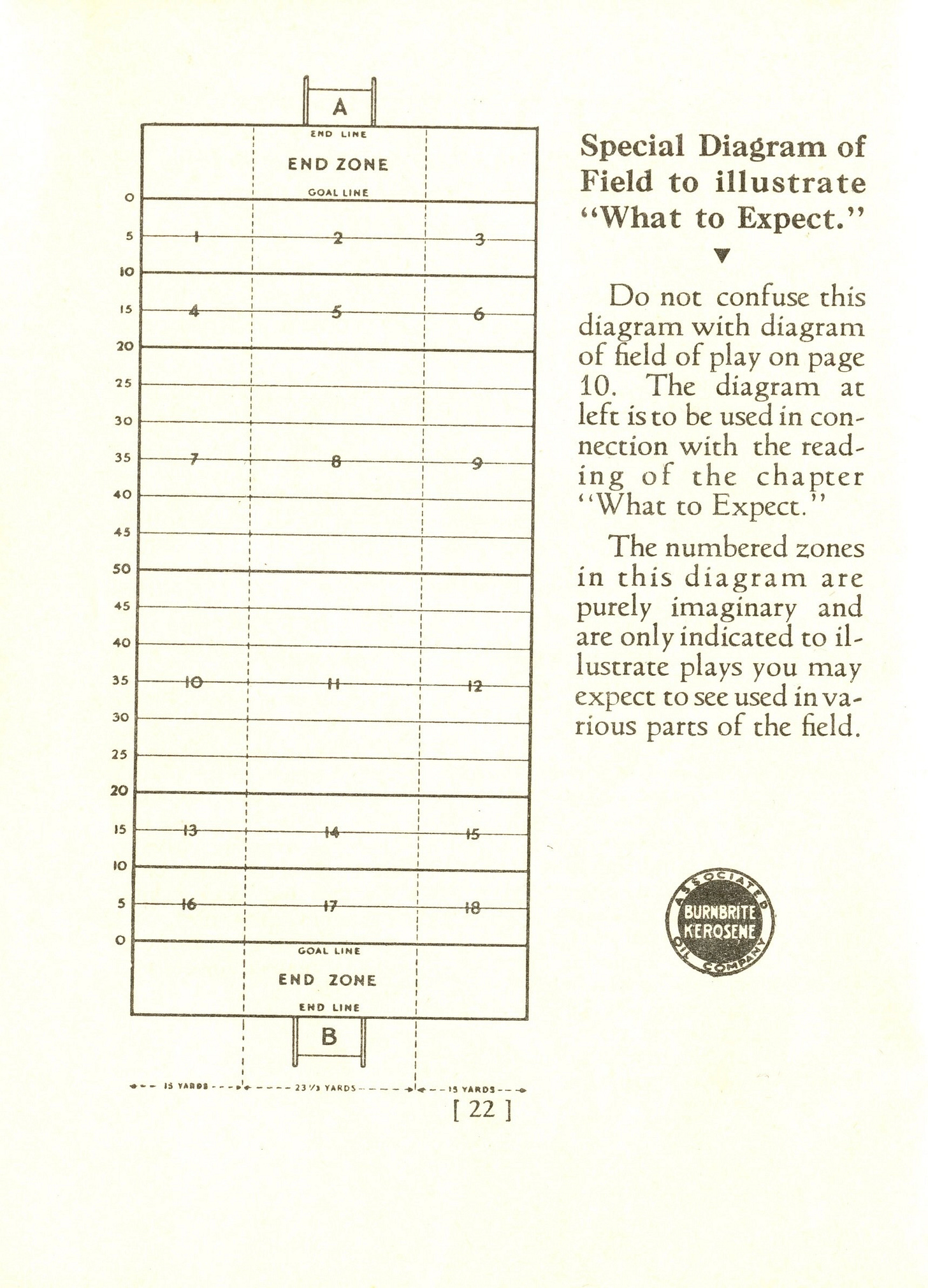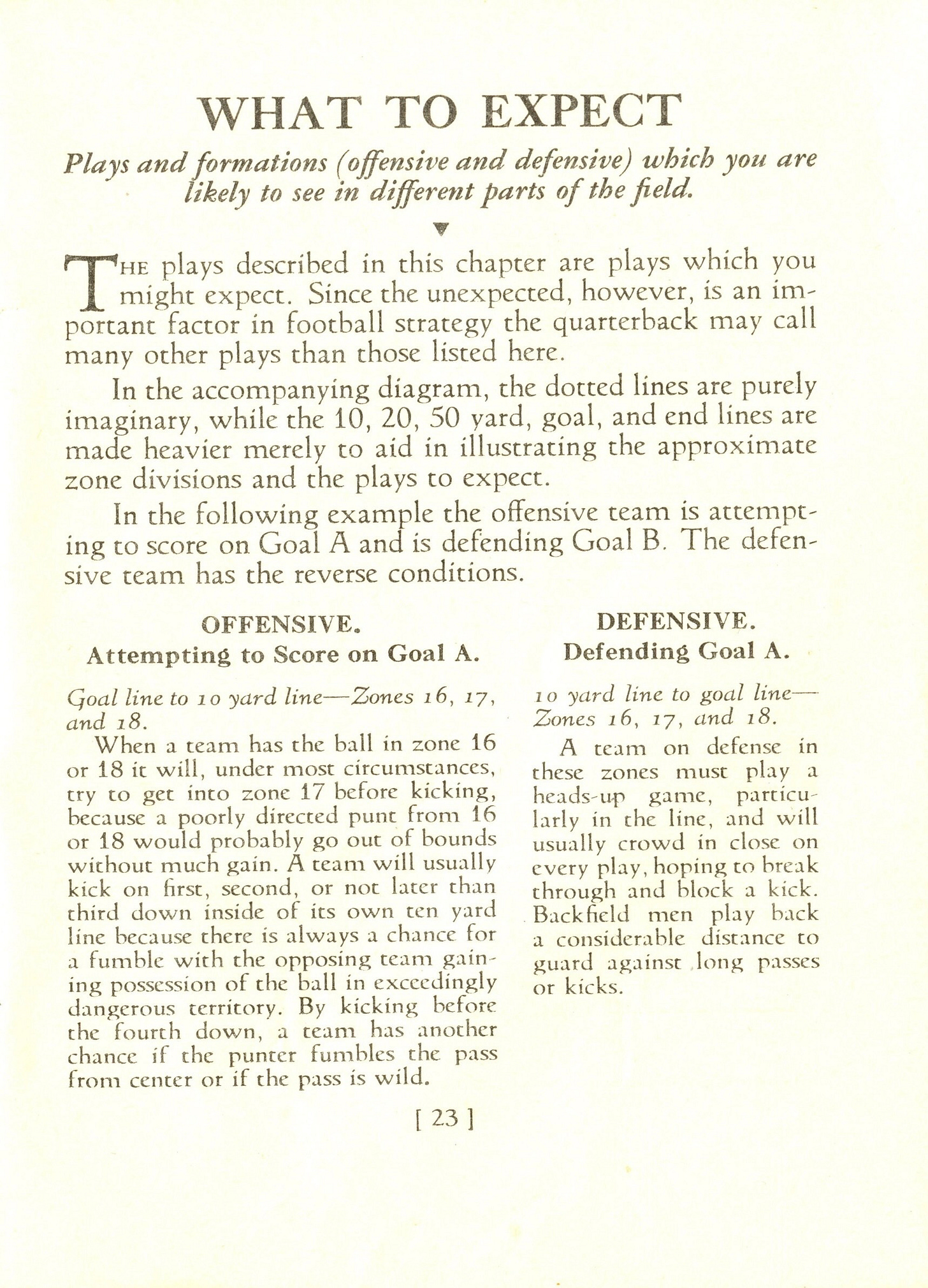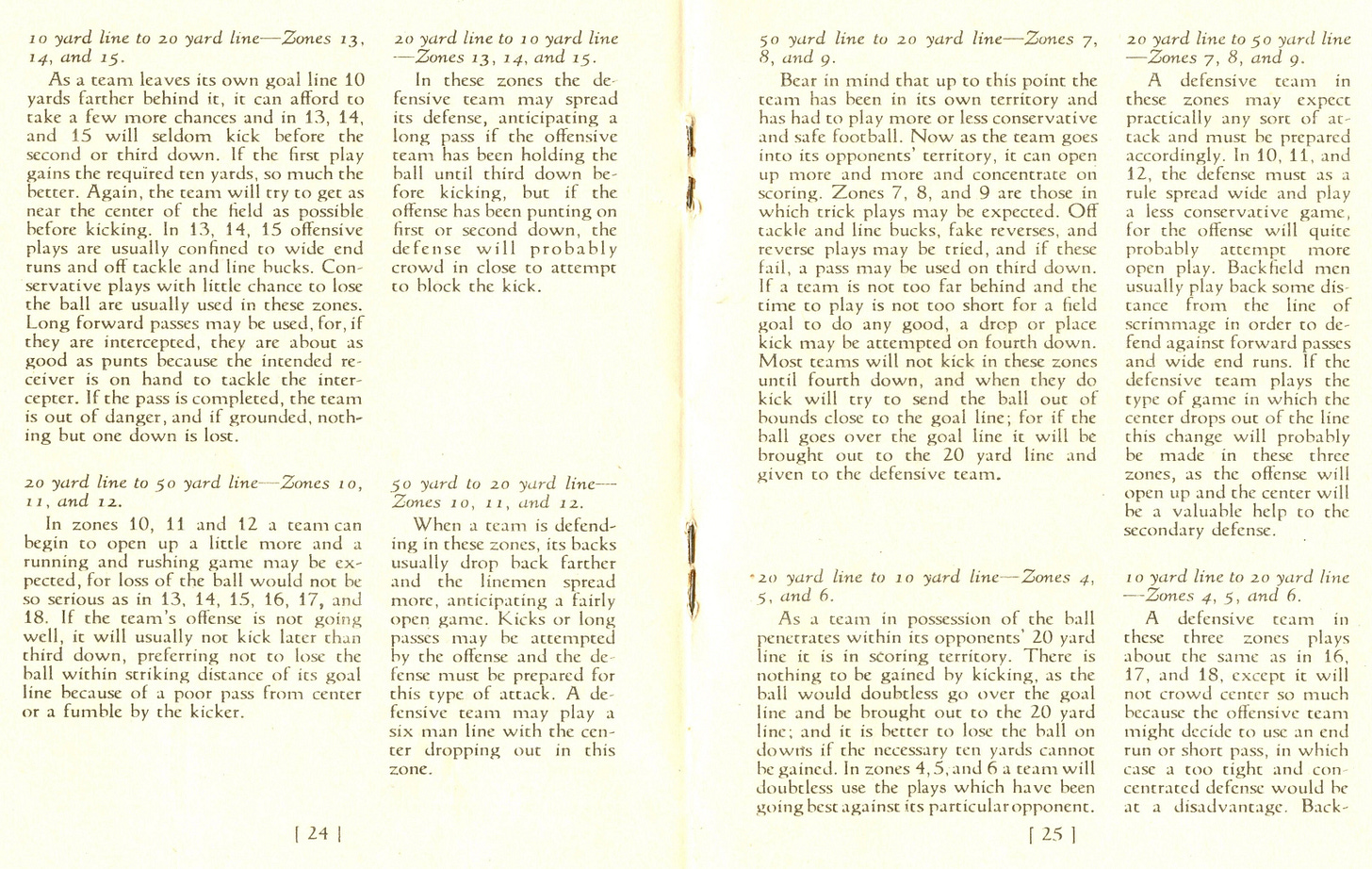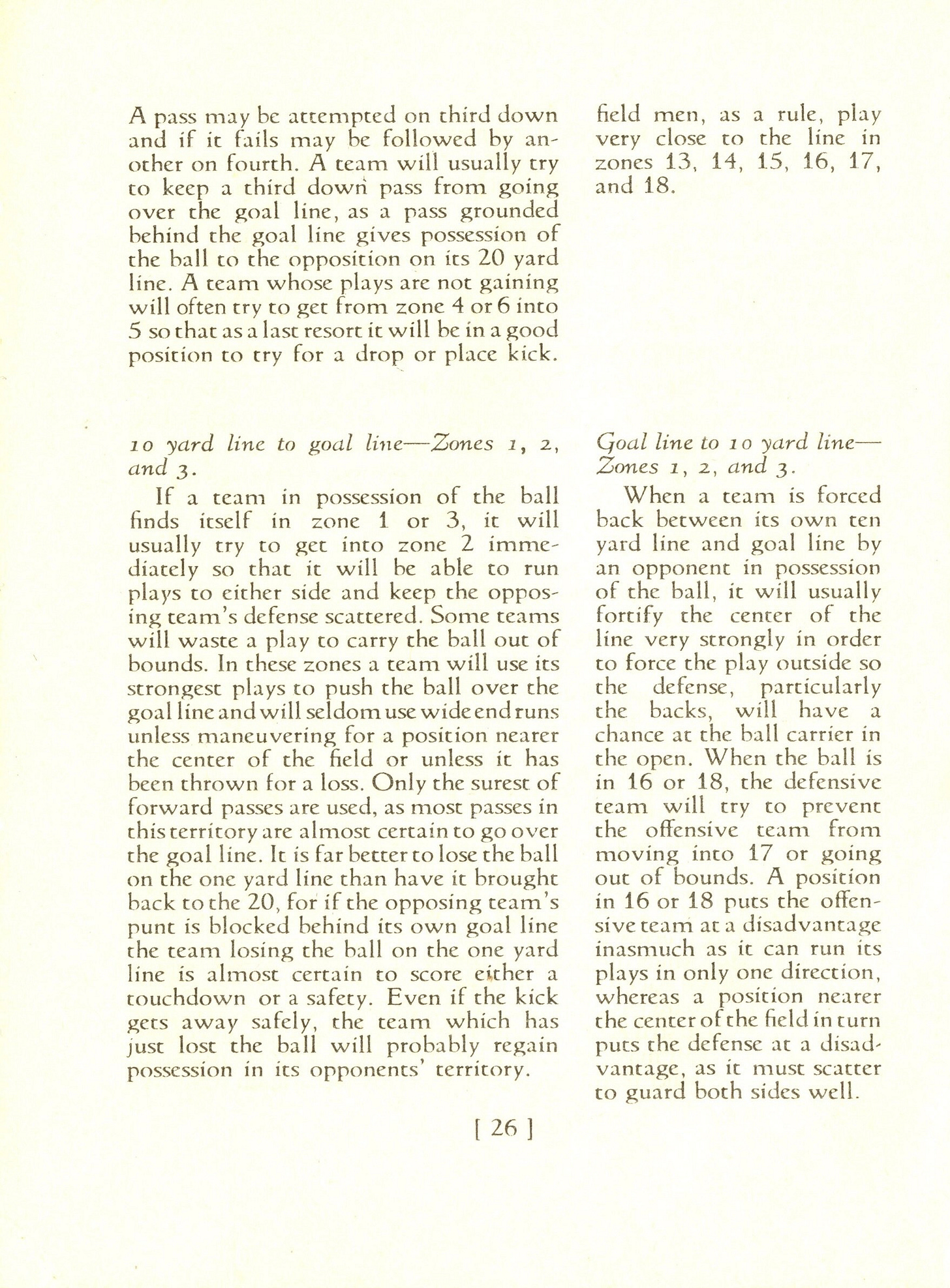Pop Warner's "Football For the Spectator"
Part of the fun of acquiring old football-related advertising premiums is that their booklet format forced creators to condense the information. Their summaries can be especially interesting when the creator is Pop Warner, one of football's great minds.
Warner authored Associated Oil's Football for the Spectator in 1928. Associated Oil was a West Coast brand. By 1928, Warner was in his fifth year at Stanford and had authored several books on football techniques and strategies, including Football for Coaches and Players the previous year. He had three national championships at Pitt and one at Stanford.
The Associated Oil booklet is 50 pages long and has several sections to inform the general public of the fine points of the game. One section, What To Expect, outlines play-calling strategies in different areas of the field. Nearly every coach had a strategy chart or map to help their quarterbacks call plays, but there was only one Pop Warner, so his is worth reviewing.
One difference between Warner's approach and others was his focus on playcalling from the center and sides of the field, which was a bigger distinction before the field had hash marks. Also, while most strategy plans addressed only the offensive side of the ball, his covered defenses as well.
Warner divided the field into six levels, with three zones per level: the left, right, and middle. Warner considered teams inside their 10-yard line in Zones 16 to 18. His general strategy called for teams to punt on first, second, or third down, though teams in the outer zones should run a play to move the ball to the middle zone before punting. Doing so reduced the likelihood of a punt short out of bounds.
On the other hand, defenses were to try to block the punt while keeping their backs deep to field it.
Once beyond the 10-yard line, teams in Zones 13 to 15 could afford to run a play to gain yardage while keeping the ball in the middle of the field. Also, teams could attempt long passes because a deep interception had the same effect as a punt.
Teams had more discretion between the 20 and 50, with their play calling dependent on how well the offense was working. Punting by third down made sense when the offense was stagnant.
Crossing midfield and entering Zones 7, 8, and 9 between midfield and the opponent's 20-yard line allowed teams to break their conservative bounds, running straight and trick plays, even passing on third down. A drop or place kick on fourth down was a consideration. If punting, a kick into the coffin corner is preferred.
The offense's flexibility stressed defenses in these zones, making them dangerous. Defenses that employ the roving center, the forerunner of the middle linebacker, often use them in these zones.
Offenses don't punt when inside the 20-yard lines but run the plays that have worked best against that defense. Warner cautioned against throwing a pass that might land in the end zone since that resulted in a touchback at the time.
Defenses in Zones 4, 5, and 6 must guard against outside and inside attacks, whereas offenses tended not to run wide in Zones 1, 2, and 3 to avoid attempting a field goal from near the sideline.
In Zones 1, 2, and 3, offenses stressed getting the ball into the middle of the field and keeping it there. Wide runs and many passes were avoided, so offenses lost flexibility inside the 10-yard line. Defenses recognized the offense's limitations and played accordingly, including defending sweeps to prevent the team in the outside zone from moving to the middle.
Overall, the tendency toward conservative play calling and punting on early downs when on the wrong side of the 50-yard line reflected the offensive limitations of the time. Offenses struggled to move the ball when facing a quality opponent, so they tried to avoid turnovers and punted early in their territory, hoping for the reverse when the opponent had the ball on the other side of midfield.
Conversely, when approaching the end zone, offenses were limited by the rules of the time, including a field without hash marks and incomplete passes in the end zone resulting in touchbacks. Both meant teams struggled in the end zone far more then than today. Warner, of course, adapted to the rules of his time and strategized accordingly.
Football Archaeology is a reader-supported site. Click here for options on how to support this site beyond a free subscription.








Fascinating to read about how the game has changed, especially punting strategy. Makes me wonder what the average number of punts per game was back then. Now it's about four per team in the NFL.
The NFL (oops) breakout season for me was 1965, gratis Namath and Rozelle. As part of the sell that September, several 'How to follow the game' booklets appeared, none as involved as Pop's. I remember a box of them over the frozen foods; I think Birdseye was behind them ..